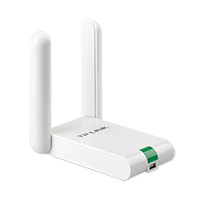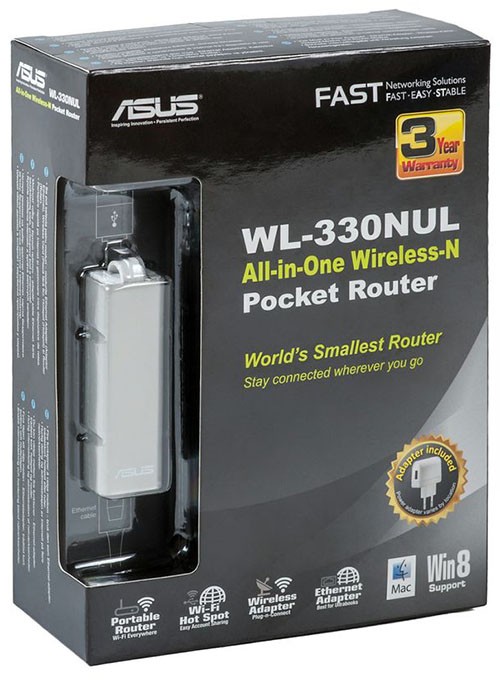Of all of the things that hotels get wrong, few things are more infuriating than poor or nonexistent WiFi. Annoyingly, many hotels view WiFi as a profit center and provide the service at rates that can’t be reasonably viewed as anything other than a price gouge. I have been on the road for the past few weeks and have encountered a lot of issues myself. In some cases, I’ve come up with workarounds. Here are a few things I have learned along the way that I hope will help you to survive your next hotel WiFi experience.
Terrible Signal. You arrive in your room and there is only one bar of signal, and it fades in and out. Forget using your mobile phone or tablet, they can’t connect to WiFi at all. So, you pull out your laptop and try to connect, but the connection keeps dropping. It’s an exercise in frustration but one that you can solve with an external WiFi adapter. I use the TP-Link TL-WN822N. It has a more powerful antenna than the one on my laptop, and with a long USB cable, I can move it around to a location in the room that gets a better signal. Additionally, you might look for whether a wired connection is available in the room. Many hotels offer both wireless and wired connections, and the wired connection is invariably faster.
 No WiFi. Sometimes hotels don’t have WiFi at all. This is where having an unlocked phone with portable hotspot capability comes in handy. I carry the Moto G as my primary mobile phone, and use prepaid SIM cards that allow for unlimited data (typically 1-5GB at 4G speeds, and the remainder at 2G or 3G speeds). This allows me to use the “portable hotspot” feature to share out my mobile phone data plan to other devices. Most unlocked Windows Phone devices also support this feature. On iOS, the “Personal Hotspot” feature is available at the option of your mobile carrier. Unfortunately, most North American carriers don’t allow this feature to be made available on versions of their phones without paying extra, so an unlocked phone is required. The speeds I get aren’t as good as I typically see with a dedicated device for data services (such as a Verizon Jetpack), but for infrequent use, it’s a good solution. This does not require carrying multiple devices and subscribing to multiple data plans.
No WiFi. Sometimes hotels don’t have WiFi at all. This is where having an unlocked phone with portable hotspot capability comes in handy. I carry the Moto G as my primary mobile phone, and use prepaid SIM cards that allow for unlimited data (typically 1-5GB at 4G speeds, and the remainder at 2G or 3G speeds). This allows me to use the “portable hotspot” feature to share out my mobile phone data plan to other devices. Most unlocked Windows Phone devices also support this feature. On iOS, the “Personal Hotspot” feature is available at the option of your mobile carrier. Unfortunately, most North American carriers don’t allow this feature to be made available on versions of their phones without paying extra, so an unlocked phone is required. The speeds I get aren’t as good as I typically see with a dedicated device for data services (such as a Verizon Jetpack), but for infrequent use, it’s a good solution. This does not require carrying multiple devices and subscribing to multiple data plans.
Charges for each device, or only one device allowed for free. Sometimes hotels want to charge you for each and every device that you connect to their wireless network. If the WiFi is free, they may only provide access to one device. Typically, devices are authenticated by MAC address. There are a couple of ways around this problem. The first is to clone a single MAC address onto multiple devices. However, this isn’t particularly easy; it’s a relatively technical thing to do. Another option is to use a travel router. Many of these have software that can “take over” the connection you set up on your laptop, and can then share it out to multiple devices. Additionally, travel routers can share out a wired network connection if one is available, which provides faster service and less complicated to set up.
Slow speed is “free,” high speed costs more. Many hotels advertise “free WiFi” when you’re booking a room. When you get there, you find out that the “free” WiFi is barely faster than dial-up, and you’ll have to pay more in order to do anything more than send and receive e-mail. How do hotels do this? They have crippled previously fast WiFi by deploying “traffic shaping” software which limits the speed of your connection. Fortunately, a lot of this software is badly designed and you can sometimes get around its annoying speed limits without paying extra. One of the workarounds that works for me most consistently is using a VPN service to connect to the Internet. I run my own VPN service so that I can reach Facebook and other social media Web sites from countries with censored Internet access, but anyone can buy a VPN service at low cost.
Hidden free WiFi areas. Many hotels offer free WiFi in public areas of the property, but don’t expect them to tell you this. If you are prompted to pay for WiFi in your room, check the lobby, conference areas and business center before you pull out your credit card. You might find fast, free access available a short walk away.
The bottom line: Hotels, like everyone else in the travel industry, are always looking for an opportunity to lard up your bill with extra charges. When it comes to WiFi, come equipped for battle. With the right moves, you could save $20 or more per day.

